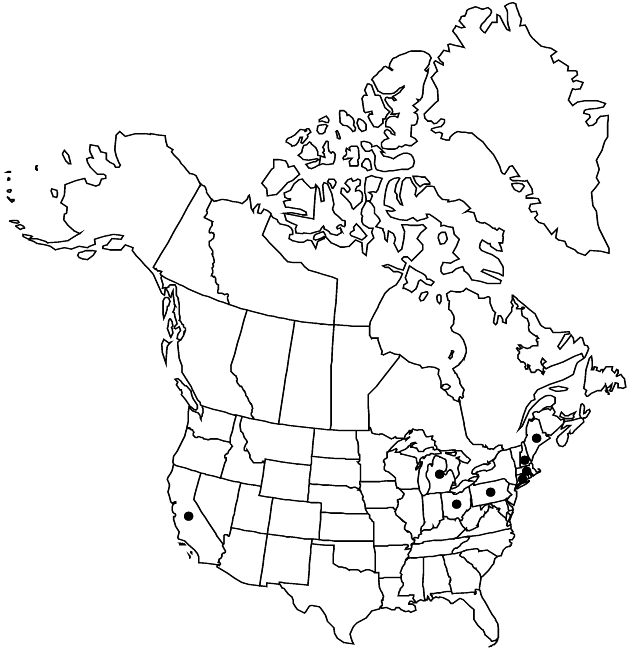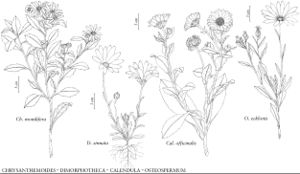Difference between revisions of "Calendula officinalis"
Sp. Pl. 2: 921. 1753.
Treatment appears in FNA Volume 19. Treatment on page 382.
FNA>Volume Importer |
FNA>Volume Importer |
||
| Line 48: | Line 48: | ||
|publication year=1753 | |publication year=1753 | ||
|special status= | |special status= | ||
| − | |source xml=https://jpend@bitbucket.org/aafc-mbb/fna-data-curation.git/src/ | + | |source xml=https://jpend@bitbucket.org/aafc-mbb/fna-data-curation.git/src/f6b125a955440c0872999024f038d74684f65921/coarse_grained_fna_xml/V19-20-21/V19_620.xml |
|tribe=Asteraceae tribe Calenduleae | |tribe=Asteraceae tribe Calenduleae | ||
|genus=Calendula | |genus=Calendula | ||
Revision as of 18:37, 24 September 2019
Leaf blades 3–12(–18+) cm × 10–30(–60+) mm. Peduncles 5–8(–12+) cm. Phyllaries 12–40+, (8–)10–12+ mm. Ray florets 30–50(–100+); corolla laminae 12–20+ mm. Disc florets (30–)60–150+; corollas (4–)5–6+ mm. Cypselae 9–15(–25+) mm. 2n = 14, 32.
Phenology: Flowering year-round.
Habitat: Disturbed places
Elevation: 0–500 m
Distribution

Calif., Conn., Maine, Mass., Mich., N.H., Ohio, Pa., Eurasia, Africa, Atlantic Islands.
Discussion
Cultivars of Calendula officinalis are widely used horticulturally, medicinally, and as pot herbs.
Selected References
None.
Lower Taxa
None.
